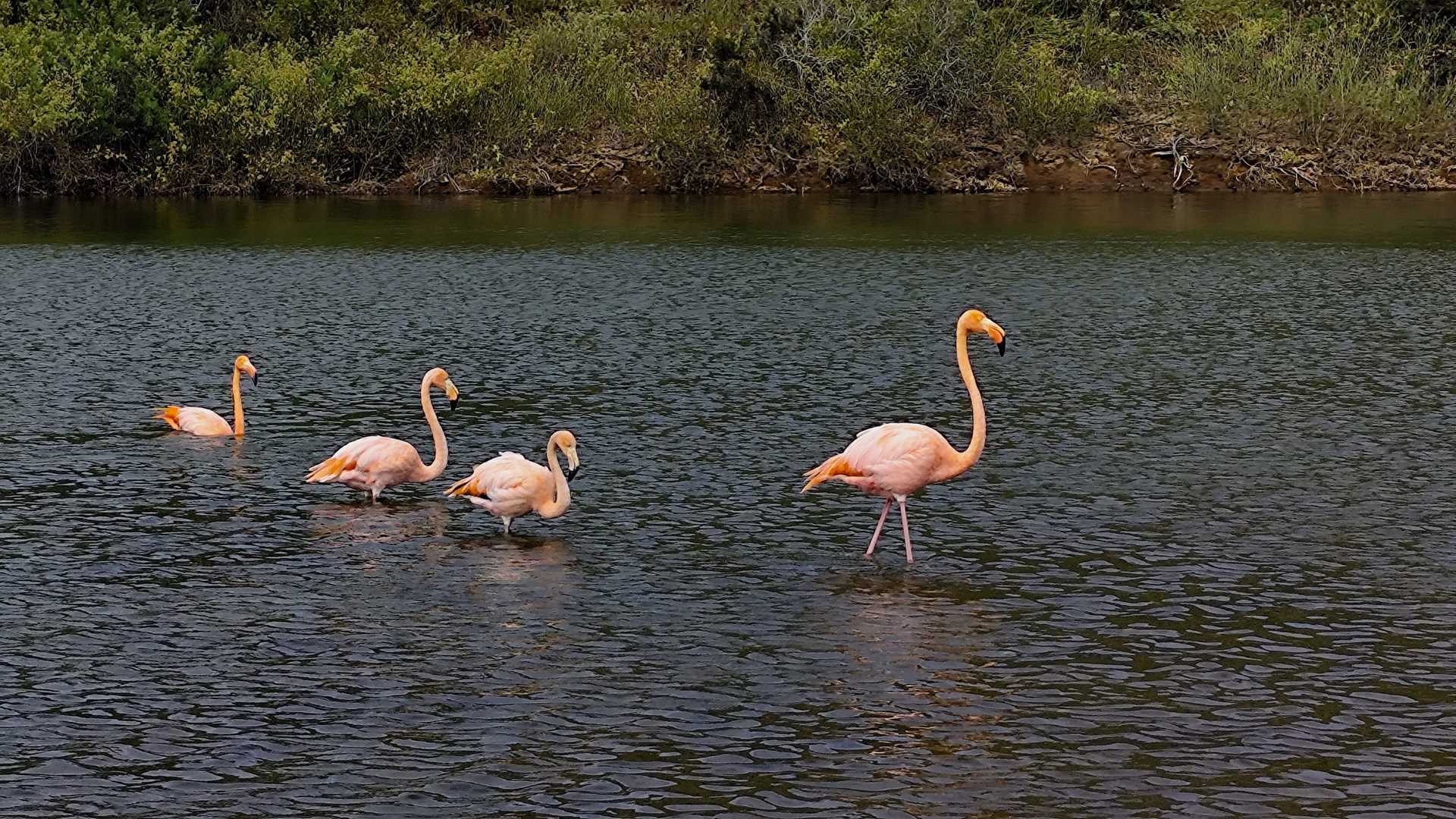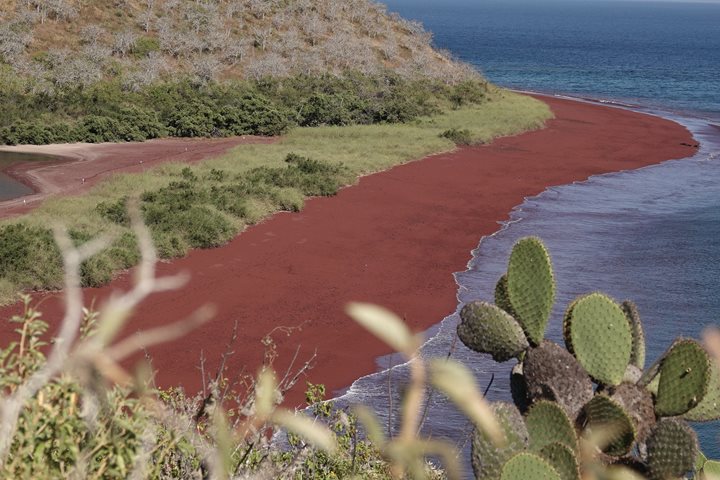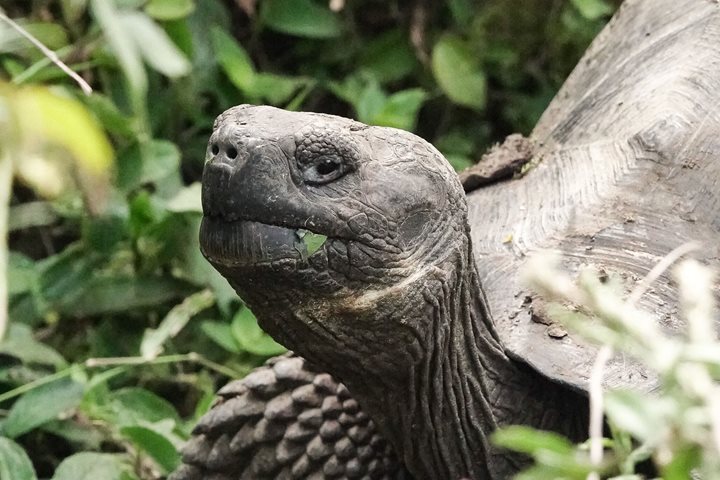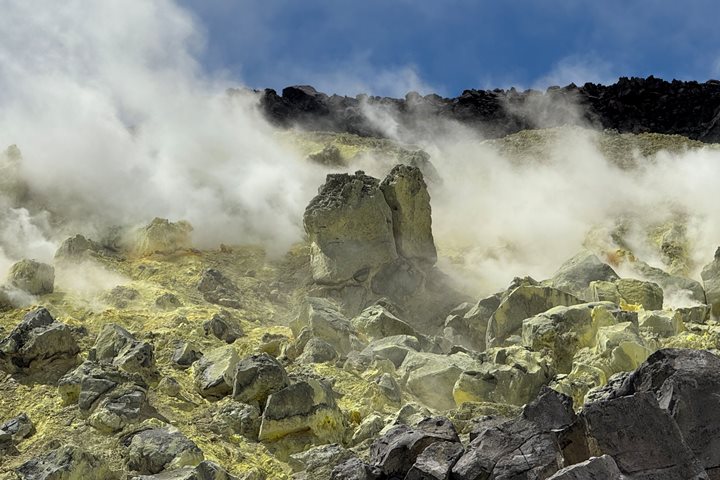Our last day was incredible! We opened our expedition with pods of dolphins, and we ended this week with another incredible dolphin show. Early this morning we kayaked along the coast of Rábida Island, and later we walked on the magical red beach, near a brackish water lagoon with flamingos and pintails. The snorkeling was phenomenal — we observed rays and sharks, as well as many varieties of sea stars and sea urchins. In the afternoon we took a Zodiac ride in search of Galápagos penguins, and we found them basking under the sun close to the caves where they overnight. Our snorkelers also enjoyed being in the Galápagos waters for one last time, after a week full of surprises like swimming with sea lions, dolphins, sharks, and multicolored fish. Next we are heading to our final location, Baltra Island, where the main airport is. Our Captain will offer a cocktail, and the entire crew will cheer with us for having had a great expedition on board National Geographic Delfina. Another successful week with great memories and new friends.
- Daily Expedition Reports
- 30 May 2025
Rabida and Chinese Hat, 5/30/2025, National Geographic Delfina
- Aboard the National Geographic Delfina
- Galápagos
Omar Adrian, Naturalist/Certified Photo Instructor
Omar arrived at the Galapagos with his family when he just a year old. His father was a Naturalist in the islands and would take him exploring both on land and in the water, aboard the ships he was working on. At an early age, he learned all about th...
Read MoreShare Report
Galápagos by Catamaran: An Intimate Voyage
VIEW ITINERARYRelated Reports
6/26/2025
Read
National Geographic Delfina
Santa Cruz Island
Today we anchored in Academy Bay on Santa Cruz Island. During the first part of the morning, we went to Fausto Llerena Giant Tortoises Breeding Center. This is where some species of giant tortoises are bred in captivity. After walking through the center and observing young and adult tortoises, we enjoyed exploring the largest town in Galapagos. We had lunch at a charming local restaurant, and from there we went to the highlands where we had a great time observing wild giant tortoises in their natural habitat. This afternoon we found several tortoises feeding, while others were enjoying a great volcanic mud bath.
6/25/2025
Read
National Geographic Delfina
Isabela Island
We spent the entire morning and part of the afternoon exploring Sierra Negra, specifically the sulfur mine area in the southwestern corner inside the caldera. The caldera is considered one of the largest in the world. It was an adventurous ride up the flank of the volcano in a local chiva (open-sided bus used all over Ecuador in rural areas). Then we walked, one way two kilometers, which included a descent of 320 feet, then an ascent to the sulfur fumaroles of another 200 feet. On return, we did it all again!







